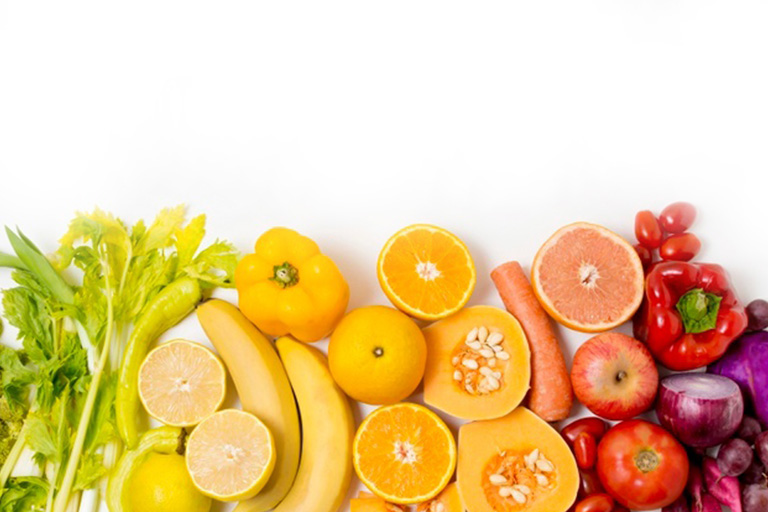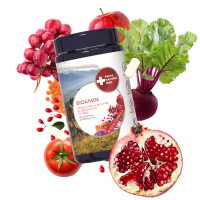The ultimate guide! It also contains the list of the best protein foods to grow your muscles
In this guide we will analyze the most recent studies and research to understand and understand together how proteins, but above all amino acids (you will understand what I am talking about later) make muscles grow to answer the question we asked ourselves, muscles grow more with animal or vegetable proteins?
Let's get some clarity right away, today we're going to understand together what the anabolic response of the muscles is when you eat vegetable proteins, which translated means: which proteins are the best at a dietary level both for protein intake and for essential amino acid intake.
Essential amino acids are so called because they are necessary for our life (and therefore also for muscle growth), but which our body is not able to synthesize in sufficient quantities and therefore we must take them through food.
We can already state that vegetable proteins are arousing strong interest both from a clinical point of view and from ordinary users who often prefer them in the process of increasing or maintaining muscle mass.
Are you looking for a boost for your sports performance?
Do plant proteins have the same anabolic effect on muscle growth as animal proteins?
Recent studies and research have shown that ingesting the plant-derived proteins in soy and wheat results in a lower response from our muscles when compared to different animal-based protein sources.

Is animal protein still superior?
The apparent lower anabolic properties of vegetable protein sources can be attributed to 2 well-defined reasons:
- Less digestibility
- Lack of some essential amino acids
To these two reasons is added, always in relation to amino acids, a lower content of leucine in most vegetable protein sources, this translates, for our goal of increasing muscle mass, into a reduction of the anabolic effect derived from their ingestion.
Given this picture you are thinking that there are not many doubts about which proteins to choose, but I ask you not to jump to conclusions and to continue reading to understand if: do muscles grow more with animal or vegetable proteins?
Muscle growth with plant proteins: a paradigm shift
Despite the lower anabolic properties of vegetable proteins compared to animal ones, we can apply various strategies to increase these properties and, consequently, the growth of our muscles, putting at least on "paper", animal and vegetable proteins on the same level. These strategies are three:
- fortification of protein sources of vegetable origin with amino acids
- select various plant sources to improve amino acid profiles
- consumption of greater quantities of protein sources of vegetable origin
However, the effectiveness of these strategies, especially the second and third, on postprandial muscle protein synthesis (ie just after meals) remains to be studied and tested. However do not worry as soon as there is news we will immediately update this part with new discoveries or scientific studies.
Why is the peak of essential amino acids after a meal so important?
The simple answer is not obvious, the increase in postprandial concentrations of essential amino acids (EAA) modulates our protein synthesis rates within our muscles causing them to increase.
In this situation, if we ingest a lower content of essential amino acids or if there is a specific lack of some of them (such as leucine, lysine and/or methionine) a lower anabolic capacity can occur and this, as we said before, is very more common when we eat proteins of plant origin.
What influences the postprandial availability of essential amino acids?
The availability, within our body, of essential amino acids after a meal is regulated by a series of physiological processes, among the most important we can mention:
- Protein digestion
- The interpersonal capacity, of each of us, to absorb them
- The intestinal microbiota, i.e. the billions of good bacteria that contribute to our intestinal function
- The composition of amino acids
- The content of essential amino acids
- The presence or absence of anti-nutritional factors, i.e. substances present in foods that interfere with the absorption of essential nutrients for our body
Let's face it, animal proteins generally contain more essential amino acids
In the graph below, we find the essential amino acid (EAA) composition of various animal and plant protein sources compared to human skeletal muscle protein.
Specifically, the composition of the following foods was analysed:
- Oatmeal
- Lupino
- Wheat
- Hemp
- Algae
- Soy
- Brown rice
- peas
- More
- Potato
- Milk
- Whey (Whey)
- Calcium caseinate
- Casein
- Eggs

The result of this comparison was what we already expected, i.e. the content of essential amino acids in vegetable proteins such as oats (21%), lupine (21%) and wheat (22%) was lower than in proteins of animal (whey 43%, milk 39%, casein 34% and egg 32%) and human muscle protein (38%).
Amino acids and leucine: their content varies greatly in vegetable proteins
Now let's face another point of our comparison that will help us answer our initial question: Do muscles grow more with animal or vegetable proteins?
Let's examine the amino acid profile of the protein sources that we analyzed a little while ago (if you hadn't figured it out yet, amino acids are the "tipping point" to answer the question we asked ourselves today) in the case of vegetable proteins, the content of leucine has a very wide variation and in some cases the content is higher than that of animal proteins.

Do you want to improve your physical activity?
No more useless efforts, try BIOAMIN, the essential amino acid supplement with something extra!
Going into animal proteins a little more specifically, the leucine content varies from 7% (in eggs) to 9% (in milk), that of human muscle stands at 7,6%, while the most incredible datum is that of vegetable protein ranging from 5,1% (in hemp) up to 13,5% (in corn).
The opposite case concerns instead methionine and lysine in which the content is typically lower in all vegetable protein sources than in animal and muscle ones.
Ultimately, we can state with absolute certainty that there are great differences in the content and composition of the essential amino acids contained in vegetable proteins.
So choose your plant-based protein sources very carefully, also taking into consideration the ratio between the amino acids and not just the protein intake.
Essential amino acids are primarily responsible for the growth of our muscles
You got it right, we took a long time to understand the amino acid composition of the protein sources we ingest for this very reason, because essential amino acids are mainly responsible for the growth of our muscles.
In fact, there is a relationship between the dose of essential amino acids that we ingest and the stimulation of protein synthesis that we activate, therefore to promote the growth of our muscles or prevent their loss, it is important that we consider the essential amino acid content of the dietary protein source that let's eat.
Now we come to why you have come this far, why you are reading this article, the question that has been gripping us since the beginning, we are ready to answer:

Do muscles grow more with animal or vegetable proteins?
The answer is that animal protein sources are not always the most effective (compared to vegetable ones), although we have observed that the average essential amino acid content of vegetable proteins is generally lower than those of animal origin and of human skeletal muscle, some plant proteins have higher essential amino acid content than others.
Specifically soy, brown rice, peas, corn and potato proteins have a content of essential amino acids that meet the requirements recommended by: WHO, FAO and UNU.
Furthermore, the essential amino acid content of potato protein (37%) is indeed higher than casein (34%) and egg (32%).
In conclusion then, some plant proteins can provide sufficient essential amino acids to allow robust postprandial stimulation of muscle protein synthesis and therefore growth of our muscles.
Our advice is to choose the protein sources you ingest, also paying attention to their supply of essential amino acids, because they are "essential" for your muscles to grow.
Sources:
- J Nutr. 2015 Sep;145(9):1981-91. doi: 10.3945/jn.114.204305. Epub 2015 Jul 29.
- Amino Acids. 2018; 50(12): 1685–1695. doi: 10.1007/s00726-018-2640-5



